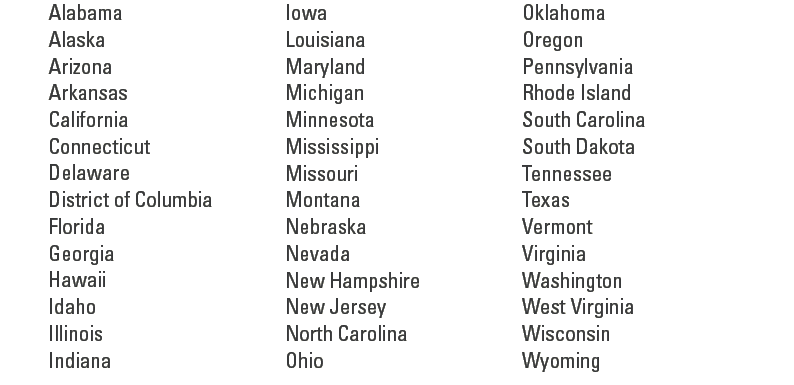Pediatric vision care is an essential health benefit under the Affordable Care Act; all new individual and small group health insurance plans, whether or not they are part of the ACA’s Health Insurance Marketplace (also called “exchanges”), must provide coverage of vision services for children younger than 19 years.
Coverage for essential health benefits is defined by a “benchmark plan” in each state. If a state’s benchmark plan does not include pediatric vision services, the benefits provided by either the Federal Employee Dental and Vision Insurance Plan (FEDVIP) or the state’s Children’s Health Insurance Program (CHIP) are used as supplements.
A majority of states (42, including the District of Columbia) chose to use FEDVIP, which covers an annual eye exam and one pair of eyeglasses per year.

Only 3 states chose to use CHIP for supplemental pediatric vision coverage. Each covers annual eye exams and, with some limitations, corrective lenses.
Kansas
Kentucky
North Dakota
In 6 states, the benchmark plan already included pediatric vision care. Coverage varies by state.
Colorado
Maine
Massachusetts
New Mexico
New York
Utah (covers ages 5-18 years only)
Sources
Center for Consumer Information and Insurance Oversight, Centers for Medicare & Medicaid Services. Summaries of EHB Benchmark Plans. Accessed on February 17, 2015. http://www.cms.gov/cciio/resources/data-resources/ehb.html
Essential Health Benefit Benchmark Plans, as of January 3, 2013. Retrieved from The Henry J. Kaiser Family Foundation website on February 17, 2015. http://kff.org/healthreform/state-indicator/ehb-benchmark-plans/
National Academy for State Health Policy and Georgetown University Health Policy Institute. Benefits and Cost Sharing in Separate CHIP Programs, May 2014.


